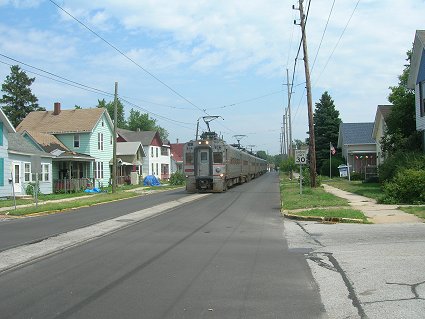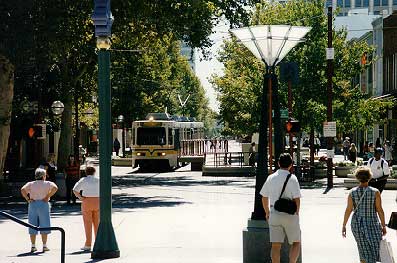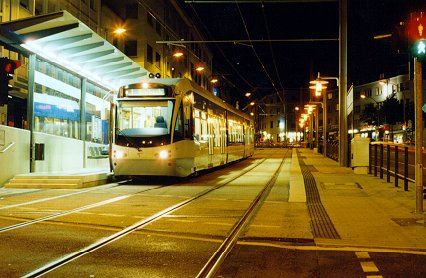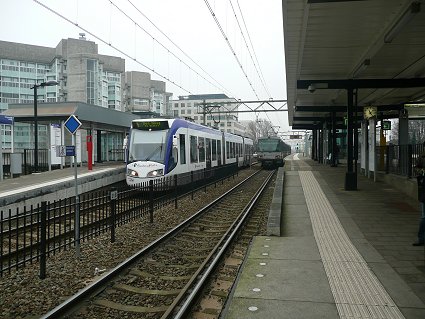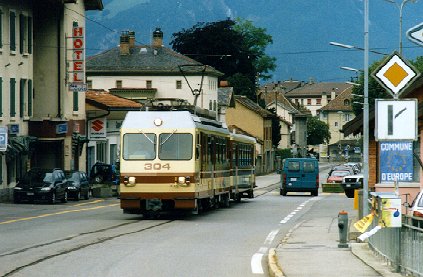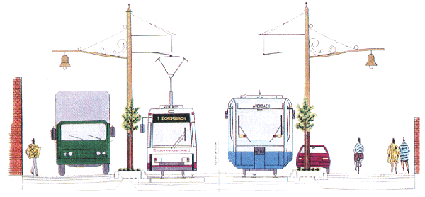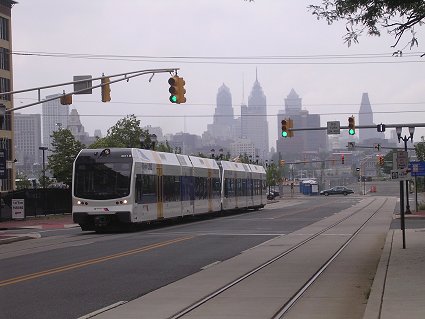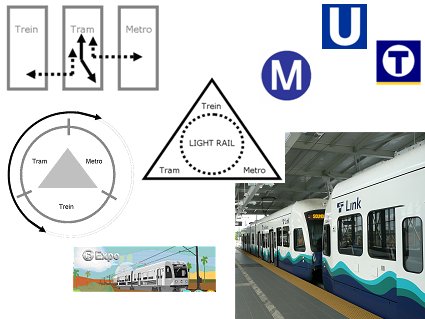|
Definitions
Feel free to correspond... More Smoothly The 'Light
Rail Transit Association' (LRTA) presents the next definition of the
Light Rail phenomenon: Circumsription (1) Unfortunately this is not a very clear definition. Indeed LRTA needs many additional words to give a proper circumscription of light rail - light rail is clean and green, safe, speedy, smooth, comfortable, compatible, civilising, acceptable and accepted, re-assuring, high capacity, affordable, reliable, versatile, adaptable, sound technology based, and last but not least, capable of going underground. Circumsription (2) According the LRTA most modern light rail systems offer frequent services that rival convenience of car, offer 'seamless journey' interchange from/to feeder services and to and from train services, offer level boarding with easy access for everyone, including wheel-chair users, offer Park & Ride so outer commuters need not drive to city centres, and offer through ticketing for day and regular users.
The conception of light rail creates a lot of confusion and misunderstanding. It is indeed a hybrid conception and thus open to different interpretations. In the next section of this page some light rail related terminology is defined and explaned. Properties
In the USA the word 'interurban' is not in use anymore, while 'trolley', an expression which contains historic connotations in the same extent, is used ambivalently to point to real light rail (e.g. San Diego) or vintage tramway service in downtown areas (e.g. Dallas). If a tram system possesses heavy rail properties it can be called Light Rail; sneltram (NL), stadtbahn (D, A), metro (F, GB, USA and many other countries), light rail transit (USA), métro léger (F, I, E, etc.). Beware of Germany Strassenbahn
can mean a classical tramway or a system containing much light rail
characteristics; U-bahn is sometimes a classical metropolitain (underground)
railway (such as in München, Neurenberg, Berlin). In other cases
it is a modernized tramway or indeed a true light rail (Hannover, Köln-Bonn,
'Ruhrgebiet, etc.). Oldfashioned?
In many countries tram (or even light rail) are expressions to be considered as oldfashioned, or simply as not appropriate. Therefore one introduces the expression 'métro léger' (F, E, and Southern America, including Mexico), 'metro' (GB), or one invents new terminology, such as tramlink (GB), metrobus (Rouen, F). Tramlink sounds understandable, but metrobus...? - the system of Rouen is nor metro nor bus, because it is a tram (T1). Don't get confused by T2, the optical guided bus of Rouen, because that's a bus indeed. Some other terminology The discussion
is continued. Please do read the next contributions! TramTrain (1)
What's this? It's a tram, but able to use heavy rail infrastructure. So it's a tram in the city of Saarbrücken (DE) which is able to drive as a train in the region (Saarland). Therefore it is called TramTrain. Other examples: France (Paris/Aulnay-Bondy, Mulhouse, and many more to come), and Karlsruhe (D) and similar systems in Germany and other countries. TramTrain (2)
TramTrain is a rather 'difficult' mode, and so a new expression. Any thoughts? Your contribution is welcome. Feel free to correspond... TrainTram (1)
It's a train, which is allowed to drive as a tram into the city. . Many examples in Japan, like in Switserland (e.g. Aigle - see photo above). Nice example: Zwickau (Germany), see section below
TrainTram (2)
After more than one year of operation the new light rail transit service from Trenton to Camden turns out to be a success. The original doubts about the project’s success have disappeared. The patronage is much higher then expected. Moreover, the technical solution used - 'train-tram', could be of interest for other places in the US, and Europe as well. Meanwhile the European-built Stadler GTW type of cars are used in many places, like soon in Groningen (Netherlands) too. UITP
International Light Rail Committee Not bad: the next two definitions 1. Ed Tennyson
defines Light Rail in accordance with the officially adopted definition
of the Transportation Research Board of the National Research Council
(USA). In his words it is: "An electric passenger railway capable
of operating in the street, across the street, on aerial structure,
in subway and on railroad tracks, characterized by but not limited to
private right-of-way and trains of from one to four cars." 2. "A
light rail vehicle can be operating in the middle of a busy street at
one moment and function as a high-speed rapid transit train moments
later."
Not a definition Light Rail is sexy! Our new definition (2010)
Feel free
to correspond... Back to the top of this page. |
|
More vocabulary & definitions
See the pages of the International Association of Public Transport (UITP - http://www.uitp.org). Particularly this page... |
